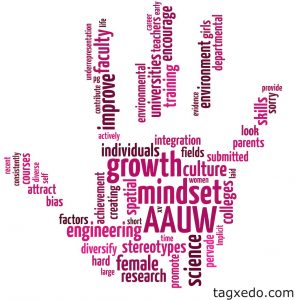If we wish to predict the future of machine learning, all we need to do is identify ways in which people learn but computers don’t, yet … time for research on how computers might also learn from conversations with human instructors – Tom M. Mitchell, Carnegie Mellon University
“Too Smart for Our Own Good?” What could go wrong? What if only singular groups … Christians or Atheists, Democrats or Republicans, Scientists or Artists …had conversation with machines? We need CS for All to build divergent thinking!
ISTE CS Refresh Standards
Please share your perspective with the individual survey.
WHY
ISTE is looking to broaden the tent of educators who engage with CS/CT through their standards refresh, and support educators who are new to CS in addition to more veteran CS teachers.
Please share your ideas on the ISTE survey.
WeTeachCS Summit June 18 Refresh Forum – Join the Texas Refresh Team
Key questions:
- What knowledge, skills and mindsets you think a teacher needs to be able to design, facilitate and assess learning and help their students meet the CS standards?
- What resources would you like to see developed to assist teachers in understanding and applying the standards?
Innovative Designer – Students use a variety of technologies within a design process to identify and solve problems by creating new, useful or imaginative solutions. Students:
a. know and use a deliberate design process for generating ideas, testing theories, creating innovative artifacts or solving authentic problems.
b. select and use digital tools to plan and manage a design process that considers design constraints and calculated risks.
c. develop, test and refine prototypes as part of a cyclical design process.
d. exhibit a tolerance for ambiguity, perseverance and the capacity to work with open-ended problems.
Computational Thinker – Students develop and employ strategies for understanding and solving problems in ways that leverage the power of technological methods to develop and test solutions. Students:
a. formulate problem definitions suited for technology-assisted methods such as data analysis, abstract models and algorithmic thinking in exploring and finding solutions.
b. collect data or identify relevant data sets, use digital tools to analyze them, and represent data in various ways to facilitate problem-solving and decision-making.
c. break problems into component parts, extract key information, and develop descriptive models to understand complex systems or facilitate problem-solving.
d. understand how automation works and use algorithmic thinking to develop a sequence of steps to create and test automated solutions.
- Members: Nicole Beeman-Cadwallader, Snehal Bhatka, Josh Caldwell, Joe Kmoch, Karen North, Dr. Anne Ottenbreit-Leftwich, Dr. Helen Padgett, Dr. Youwen Ouyang, Tammie Schrader, Darshell Silva, Dr. Mano Talaiver, Dr. Aman Yadav
- Core Team: Octavia Abell, Desiree Harpel, Kim Hermans, Carolyn Sykora
- Initial Draft
RESOURCES:
- Tool Kit to host a refresh forum: https://drive.google.com/
- ISTE standards for educators
- ISTE standards for CS Educators
- No Fear Code – Support for ISTE book
- ISTE Advocacy Training
ARTICLES:
HISTORY: How long do you look at a problem before you take action?
- 2010 CS standards proposal K-5
- 1997 Article by Dr. Mae Jemison “We’re not in this to win gold medals in science and math: “Let us make the commitment to curriculum reform, not standards so students score well on a test, but real reform – bringing a hands-on, minds-on curriculum that develops the critical thinking, problem-solivng and teamwork skills needed.” This was 20 years ago …


Aloha Karen,
Nice info!
Love you,
Your bro, Jim